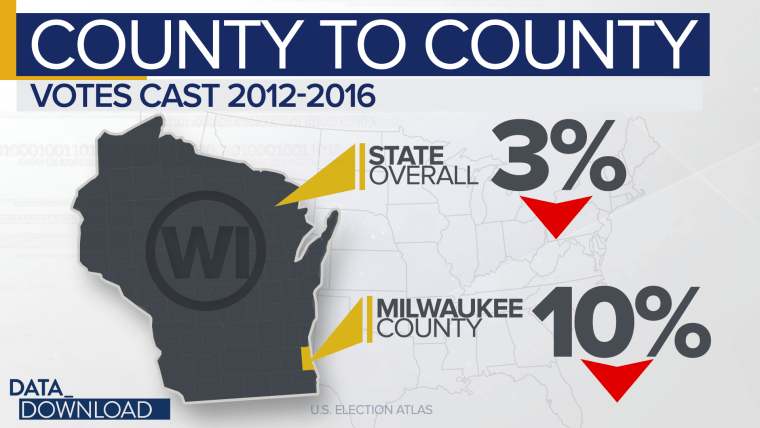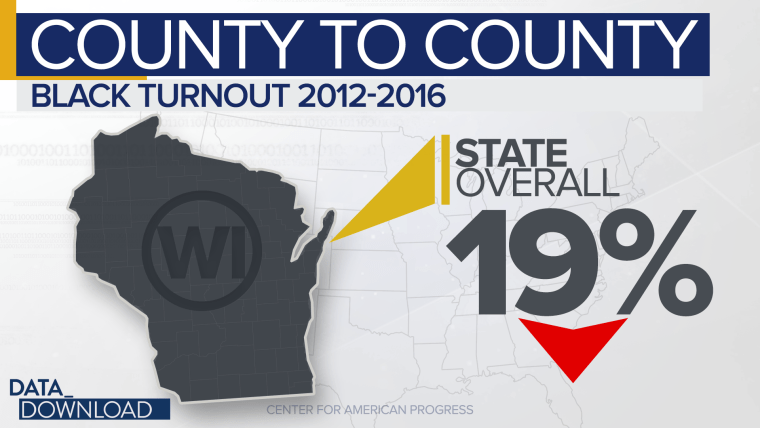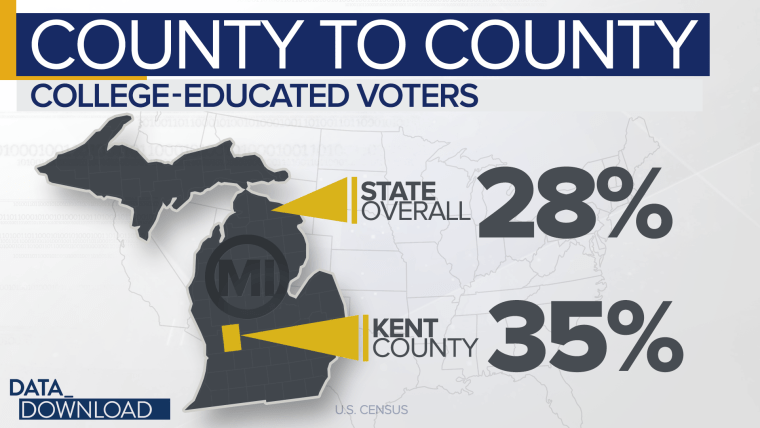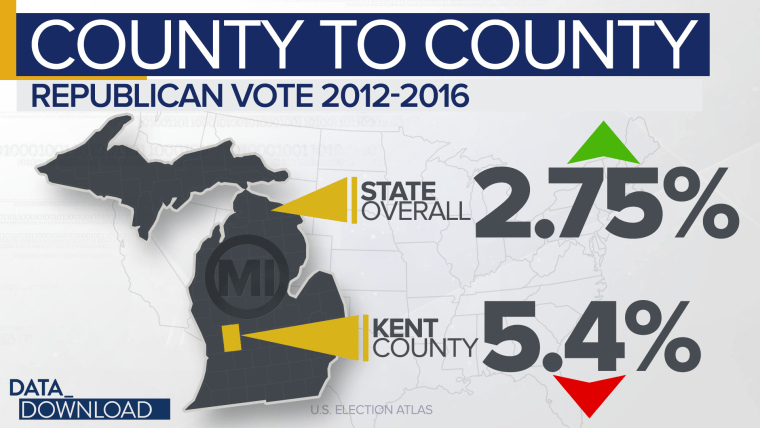WASHINGTON -- As the 2020 campaign gains momentum, the lessons from 2016 seem more relevant. National numbers and analyses can’t adequately capture the complexities of the Electoral College vote. And the American electorate is less a single entity than a complicated mix identities, views and beliefs.
With that in mind, Meet The Press is going to be spending time in five different communities around the country with the hope of better understanding the fault lines that will define the next presidential race – locales that will help fill in the picture of what the polls are saying and why. We call this project County to County.
This week, we look at two of those communities: Milwaukee County in Wisconsin and Kent County in Michigan. Think of them as places where two of the biggest stories in the election will unfold: Will African-Americans turnout? And will establishment Republicans come home on Election Day?
Milwaukee County is a key community to watch the first question. Wisconsin was a state where turnout was down in 2016 and Milwaukee stood out on that count.

In total there were about 92,000 fewer votes cast in Wisconsin in 2016 than there were in 2012. That was about 3 percent decline in votes produced overall. But the majority of that decline, 51,500 votes, came from the Democratic bastion of Milwaukee County, where the drop was 10 percent.
The net result of those numbers was that President Donald Trump won in a state where he was not wildly popular. Trump won Wisconsin by about 23,000 votes overall. And Trump won the state with fewer votes, 1,405,000, than Republican Mitt Romney lost it with in 2012, 1,407,000 votes.
Why was the vote in Milwaukee in particular down so much? The demographic differences indicate the African-American vote was crucial.

At the state level Wisconsin is not a picture of racial and ethnic diversity, more than 80 percent of population is white and non-Hispanic. But Milwaukee looks very different. Just over 50 percent of the population is white and not Hispanic, 27 percent are African-American and 15 percent are Hispanic.
National maps of the 2016 vote show some of the steepest drops in ballots came from African-American neighborhoods. And research from the Center for American Progress, found that African-American turnout fell by 19 percent in Wisconsin in 2016.
Bumping up the enthusiasm among those voters in 2020 is a big goal for Democrats. And not just in Milwaukee but in counties where the story was similar in 2016 – such as Wayne and Genesee in Michigan, the homes of Detroit and Flint respectively.
Across Lake Michigan, Kent County offers a different view of the push and pull among key voter groups going into 2020. The county, which is home to Grand Rapids, was a place where Trump underperformed in 2016.

Trump flipped Michigan to the GOP side of the ledger in 2016, doing about 3 points better than Mitt Romney did in the state in 2012. But in Kent, a long-time Republican stronghold, Trump did worse – by more than 5 points.
In fact, Trump’s 47.6 percent in the county represented a low-water mark for a GOP presidential candidate in the last two decades.
Driving that drop in the vote for Trump is the kind of voter – and particularly the kid of Republican – that dominates Kent County, wealthy and educated.

Kent County was the long-time home of former president Gerald Ford, it holds the museum that bears his name and it is still home to the moderate, “chamber of commerce Republicans” that were once the biggest base of the GOP. The median household income in Kent is about $5,000 over the Michigan state figure and the percentage of adults with a college degree is seven points above the state numbers.
In recent years, those with college degrees have been trending away from the GOP as the party sees its strength grow with blue-collar voters. Data suggest Trump’s presidency has accelerated those changes.
Kent offers a good perch to watch what those more establishment Republicans will do in 2020. And in a broader sense, it’s a stand-in for other counties that hold similar kinds of voters including Delaware County Ohio and Douglas County Colorado.
Milwaukee and Kent counties are just two of the communities we’ll be using as listening posts in 2020.
Over the next year, Meet the Press will be reaching out to people in these places and others regularly and visiting with them for the County to County project. The goal is to get beyond the national storylines and use data and on-the-ground reporting to see the election through the eyes of different kinds of voters and communities outside of Washington.
The presidential race happens on a national stage, but it will be decided by voters at the state and local level who see the world through very different lenses. We’ll be using the voters in Milwaukee and Kent and the other counties we visit to get a sense of how key voter blocs view the election, important issues and, the biggest campaign issue of 2020, the president himself.